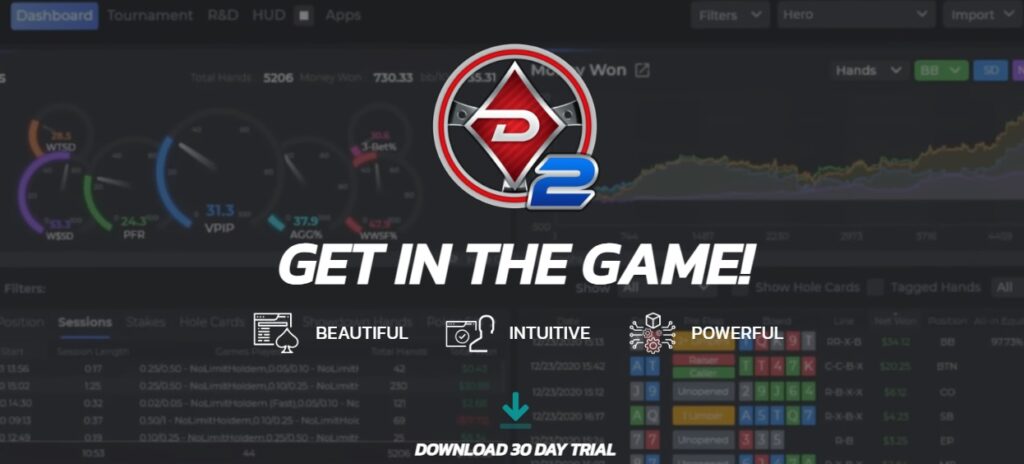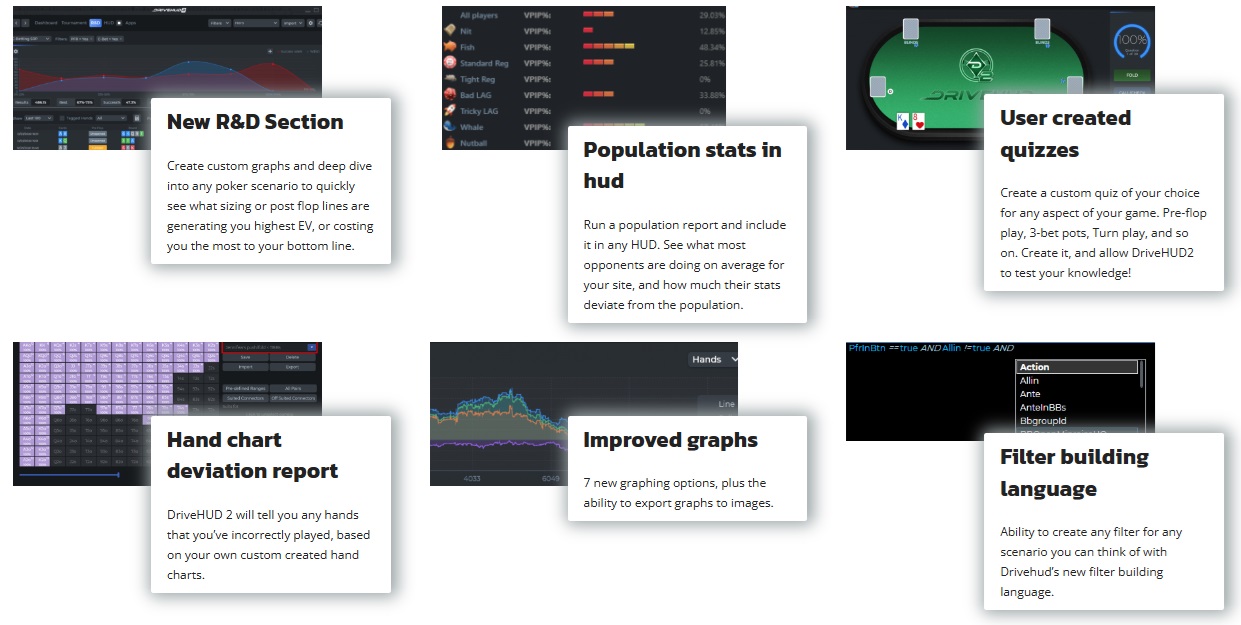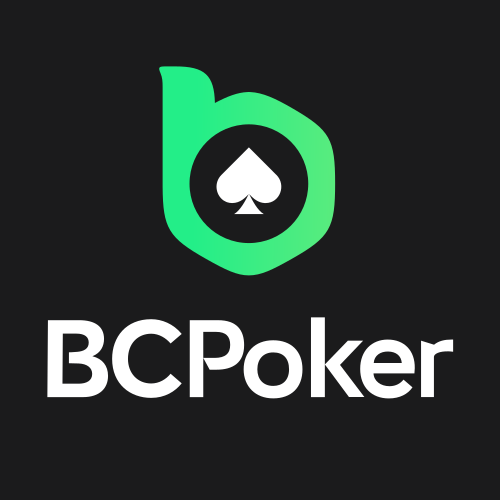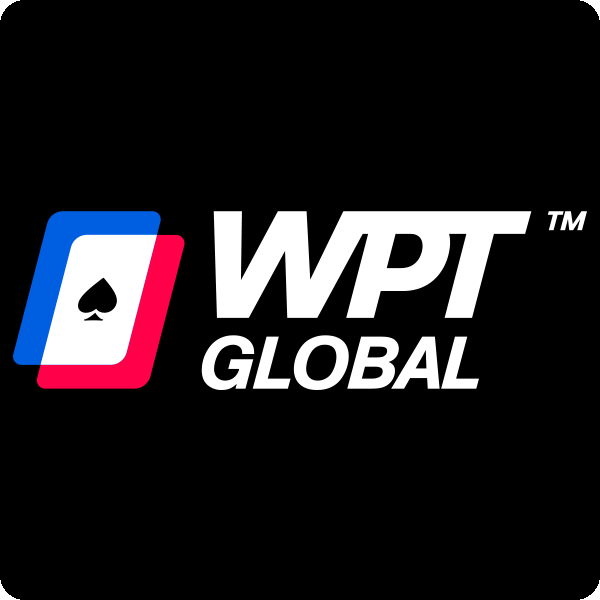PLO Strategy: How to win in 2025
Pot Limit Omaha (PLO) represents one of poker’s most dynamic and strategically complex variants. While sharing similarities with Texas Hold’em, Omaha Poker strategy demands a unique approach to hand selection, position play, and pot management.
This comprehensive guide explores essential PLO poker strategy elements to help players master this exciting format and maximize their potential at the tables.
Find the best PLO action and rakeback deals here:
BCPoker NEW
Get $5 FREE (only with App Registration)
$200 First Deposit Bonus
Incredibly Soft Action
WPT Global
Free Tournament tickets up to $480
Free Casino Coin up to $100
30% Rakeback
Network: Independent
Phenom Poker
up to 35% Rakeback
Soft Action
Network: Independent
Juicy Stakes Poker
36% Rakeback
Spin & Gos with up to 12,000x your Buy-in
Network: Horizon Poker
Champion Poker
Network: iPoker
Check out our new guide How to Choose the Best Rakeback Deals here?
Understanding the Basics of Pot Limit Omaha
What is Pot Limit Omaha?
Pot Limit Omaha, commonly known as PLO, represents a poker variant that combines strategic depth with action-packed gameplay. Whether you’re interested in PLO cash game strategy or PLO tournament strategy, players receive four hole cards and must use exactly two of them combined with three community cards to make their best hand. This core mechanic creates more complex decision-making scenarios than Hold’em.
Key Differences Between Omaha and Texas Hold’em
Key distinctions between these poker variants include:
- Starting Hands: PLO deals four hole cards versus Hold’em’s two
- Hand Formation: Players must use exactly two hole cards in PLO, while Hold’em allows any combination
- Betting Structure: PLO’s pot-limit format creates unique strategic considerations
The Importance of Hole Cards
In PLO strategy and tactics, starting hand selection becomes more nuanced due to the four-card format. Whether playing Omaha, PLO5 strategy or PLO6 strategy variants, understanding hand potential is crucial. Strong starting hands typically feature connected cards with multiple ways to make powerful holdings.
Betting Structures in PLO
The pot-limit betting structure defines PLO gameplay:
- Players can bet up to the current pot size
- Pot size calculations include all bets and calls
- This format creates distinctive strategic opportunities
Common Terminologies in PLO
Understanding PLO-specific terminology enhances your ability to implement PLO advanced strategy effectively. Key concepts include:
- Nuts: In PLO strategy, having the nuts means holding the absolute best possible hand at any given moment, which is crucial for maximizing value.
- Draw: A hand with potential to improve on future streets, particularly important in PLO poker strategy where drawing hands have significant equity.
- Pot Odds: The mathematical relationship between the current pot size and the cost to call, essential for making profitable decisions in Pot Limit Omaha strategy and tactics.
PLO Basic Strategy and Rules
To implement effective PLO preflop strategy and advance our overall gameplay, we must understand these fundamental rules:
- Players receive four hole cards, creating more complex preflop decisions than in Hold’em.
- Making the best five-card hand requires exactly two hole cards combined with three community cards, a crucial aspect of both PLO cash game strategy and PLO tournament strategy.
- The pot-limit betting structure means players can wager up to the current pot size, influencing strategic decisions.
If you want to learn about PLO strategy and rules, then head over to PLO Mastermind, the best Pot Limit Omaha training site:

Starting Hand Selection in Pot Limit Omaha
Importance of Starting Hands
In Pot Limit Omaha, starting hand selection significantly impacts our success rate. Unlike Hold’em’s two-card format, PLO’s four-card structure (or variations like PLO5 strategy and PLO6 strategy) creates exponentially more possible combinations. This complexity demands careful hand selection to optimize our winning potential.
Best Starting Hands in PLO
Top-tier PLO starting hands typically include:
- Double-suited hands: These provide multiple flush possibilities, such as A♠A♦7♠6♦, offering strong equity in multiway pots.
- High pairs with coordinated cards: Premium holdings like A♠A♦K♠K♦ provide both immediate strength and drawing potential.
- Connected hands: Holdings such as J♠10♦9♠8♦ create numerous straight possibilities and strong drawing combinations.
Double-Suited Hands
Double-suited holdings carry exceptional value in PLO strategy. For example, A♠A♦7♠6♦ offers not only a premium pair but also two distinct flush possibilities, maximizing our potential outcomes.
Connected Hands
Connected holdings like J♠10♦9♠8♦ excel at making straights and provide multiple drawing opportunities. These hands perform particularly well in position.
Hands to Avoid
We should generally steer clear of:
- Single-suited hands: These lack the drawing power of double-suited holdings.
- Weak pairs: Holdings like 2♣2♦3♠4♣ typically struggle post-flop.
- Disconnected hands: Cards without coordination often lead to difficult post-flop situations.
Adjusting Hand Selection Based on Position
Position plays a crucial role in implementing an effective PLO strategy. When seated in early positions (UTG, UTG+1), we should maintain a tighter PLO preflop strategy, focusing primarily on premium holdings that can withstand aggression from multiple opponents. This conservative approach helps us avoid difficult post-flop situations when playing out of position.
Understanding position-based adjustments is fundamental to mastering PLO poker strategy. By carefully selecting our starting hands and adapting our play based on table position, we significantly improve our chances of success in both PLO cash game strategy and PLO tournament strategy.
Pre-Flop Strategies for Pot Limit Omaha
Evaluating Starting Hands
Implementing effective PLO strategy and tactics begins with careful hand evaluation before the flop. The starting hands we choose directly influence our potential for profit. When developing our PLO advanced strategy, we should prioritize holdings that offer multiple paths to strong combinations. Consider these essential factors:
- Prioritize double-suited hands that provide multiple flush possibilities and strong equity.
- Select connected cards that can create multiple straight combinations.
- Avoid weak holdings that lack coordination or have limited potential for improvement.
Importance of Position
Table position significantly impacts our PLO preflop strategy. Late position offers valuable information about opponents’ actions, enabling more informed decisions. When implementing our Omaha Poker strategy, we should:
- Leverage late position to play more aggressively and control pot sizes effectively.
- Exercise caution in early position by playing premium hands only.
Raising and Calling Pre-Flop
Strategic pre-flop play forms the cornerstone of successful PLO strategy. Well-timed raises help define opponents’ ranges and build pots with strong holdings. Consider these key approaches:
- Use premium hands to raise and thin the field.
- Play speculative hands from advantageous positions.
- Minimize limping, as it often creates post-flop complications.
Isolating Opponents
A powerful element of Omaha Poker strategy involves isolating weaker players. Raising against limpers can force them to make difficult decisions and play larger pots against our strong holdings, increasing our profit potential.
Limping vs. Raising
In modern PLO strategy and tactics, limping generally proves less effective. Raising offers better pot control and range definition. Consider these factors:
- Limping often leads to multiway pots with reduced win rates.
- Raising helps establish pot control and gather information about opponents’ holdings.
Common Mistakes to Avoid
To enhance our Pot Limit Omaha strategy, we must recognize and avoid frequent errors:
- Overestimating hand strength in multiway scenarios, a common pitfall when transitioning from other poker variants to PLO strategy.
- Playing an overly loose range preflop, which creates challenging post-flop situations and impacts our overall PLO cash game strategy.
- Disregarding positional awareness, a critical factor that influences our PLO advanced strategy decisions throughout the hand.
By mastering these fundamental preflop concepts and avoiding common mistakes, we can develop a more robust PLO poker strategy that adapts to various game formats and stake levels.
Post-Flop Strategies in Pot Limit Omaha
Reading the Board
Understanding board texture is fundamental to effective Omaha Poker strategy and tactics. We must carefully analyze how community cards interact with our holdings and potential opponent ranges. Board texture significantly impacts our decision-making process and shapes the hand dynamics.
Evaluating Hand Strength
Post-flop hand evaluation requires thorough analysis in PLO. This process involves:
- Comparing our holdings against potential drawing combinations.
- Calculating our available outs for improvement.
- Evaluating the probability of opponents holding superior hands.
Continuation Betting
Continuation betting serves as a cornerstone of PLO advanced strategy. When we’ve shown preflop strength and encounter a favorable flop, maintaining aggression often proves profitable. This approach helps us:
- Maximize value when holding strong hands.
- Encourage opponents to fold weaker holdings.
- Extract valuable information about opponent holdings through their responses.
Drawing to the Nuts
In PLO poker strategy, pursuing the nuts (best possible hand) is crucial. We should prioritize drawing to the strongest possible combinations, minimizing the risk of being dominated by better hands.
Bluffing in PLO
While bluffing can be effective in PLO strategy, it requires careful implementation. Key considerations include:
- Board structure: Does it support our bluffing narrative?
- Opponent tendencies: Are they likely to fold to aggression?
- Our perceived image: How have our previous actions influenced opponents’ perceptions?
Managing the Pot Size
Effective pot size management is crucial in Pot Limit Omaha strategy. We should:
- Exercise pot control with drawing hands.
- Build larger pots with strong made hands.
- Consider pot odds when making decisions.
Successful post-flop PLO strategy requires adaptability, focusing on board reading skills, accurate hand evaluation, and effective pot size management.
Advanced Pot Limit Omaha Techniques
Hand Ranges and Equity
Understanding hand ranges is vital in PLO strategy. We must accurately assess our hand strength against opponents’ likely holdings. Equity calculation forms the foundation of sound decision-making. Consider these key aspects:
- Evaluate hand strength in relation to the board texture.
- Calculate potential outs for improvement.
- Utilize equity calculation tools for range analysis.
Semi-Bluffing
Semi-bluffing is a crucial element of PLO advanced strategy that can significantly enhance our win rate. This powerful PLO poker strategy technique allows us to build pots with drawing hands, creating two paths to victory: either by forcing our opponents to fold immediately or by completing our draw. When implementing this Omaha Poker strategy and tactics, consider these essential guidelines:
- Carefully analyze board textures to identify optimal semi-bluffing opportunities, particularly in PLO cash game strategy scenarios.
- Calculate our drawing odds thoroughly to ensure we have sufficient equity to justify our semi-bluffing frequency.
- Study opponent tendencies and adjust our semi-bluffing strategy accordingly, a key aspect of PLO advanced strategy.
Check-Raising
Check-raising represents a sophisticated Omaha Poker strategy component that can help maximize value and protect our holdings. This move can disorient opponents and force them into challenging decisions, particularly in PLO tournament strategy situations. To implement effectively:
- Select opportune moments to check-raise, especially when holding premium hands or strong draws.
- Consider stack-to-pot ratios and opponent stack depths carefully.
- Deploy this tactic judiciously to maintain its effectiveness in our overall PLO strategy.
Slow Playing
In both PLO5 strategy and PLO6 strategy, slow playing involves taking a passive line with strong holdings to induce action from opponents. While this approach carries inherent risks, it can lead to substantial rewards when executed properly. Follow these guidelines:
- Reserve slow playing for situations where we hold very strong hands and the board structure favors our holding.
- Remain vigilant about potential drawing hands that could outrun our holding.
- Focus on maximizing value through careful bet sizing and opponent manipulation.
Balancing Your Range
Range balancing forms a cornerstone of successful PLO preflop strategy and post-flop play. To prevent becoming predictable, we must incorporate both value hands and bluffs in our range. Consider these strategic elements:
- Implement diverse betting patterns to create uncertainty in opponents’ minds.
- Maintain a balanced distribution of strong hands and drawing combinations.
- Modify our approach based on how opponents respond to our actions.
Exploiting Opponents
Success in PLO requires adapting our strategy to capitalize on opponent weaknesses. Here are effective ways to exploit common tendencies:
- Target players who consistently overvalue marginal holdings by adjusting our aggression levels.
- Increase our betting frequency against overly passive opponents.
- Monitor betting patterns closely to identify profitable opportunities.
Mastering these advanced techniques is essential for developing a comprehensive PLO strategy. By understanding hand ranges, implementing semi-bluffs effectively, and maintaining balanced strategies, we can establish ourselves as formidable opponents at any stake level.
Moving Up and Down Stakes
When considering stake transitions in our PLO cash game strategy, we should:
- Conduct thorough bankroll assessments to ensure adequate coverage for the intended stakes.
- Review our performance metrics and win rate at current levels before advancing.
- Maintain discipline by moving down when experiencing significant downswings, a crucial aspect of PLO advanced strategy.
Avoiding Tilt
Tilt management is essential in both PLO5 strategy and PLO6 strategy, as emotional decisions can severely impact our bankroll. To maintain composure:
- Step away from tables when experiencing emotional distress or frustration.
- Incorporate meditation and mental preparation into our PLO tournament strategy.
- Establish and strictly adhere to stop-loss limits to prevent emotional decision-making.
To achieve long-term success in Pot Limit Omaha, effective bankroll management is non-negotiable. By implementing proper limits, understanding variance, and maintaining emotional control, we can enhance our overall poker journey.

Psychological Aspects of Pot Limit Omaha
Maintaining Focus
A crucial element of PLO preflop strategy and post-flop play is maintaining unwavering concentration. The complex nature of the game demands constant attention, as distractions can lead to costly errors. We must remain vigilant regarding table dynamics and opponent behaviors.
Dealing with Bad Beats
Bad beats are inevitable in poker, particularly in PLO where hand equities run closer. To build resilience within our PLO strategy:
- Embrace variance as an inherent aspect of the game.
- Focus on decision quality rather than immediate results.
- Utilize breaks effectively to maintain mental clarity.
Reading Opponents
Understanding opponent tendencies is vital for implementing an effective PLO strategy. Observe betting patterns and reactions carefully. This information helps optimize our decision-making process and strategic adjustments.
Emotional Control
Maintaining emotional equilibrium is fundamental in PLO. We must prevent emotions from influencing our strategic choices. Consider these guidelines:
- Establish specific session objectives.
- Implement regular mindfulness practices.
- Recognize optimal moments to conclude sessions.
Mindset for Success
Cultivating a winning mindset enhances performance. Focus areas should include:
- Dedication to ongoing strategy refinement.
- Converting mistakes into learning opportunities.
- Maintaining pragmatic expectations.
Using Psychology to Your Advantage
In PLO, psychological tactics can provide additional edges. This encompasses:
- Strategic bluffing to exploit opponent tendencies.
- Adapting playing style based on opponent reactions.
- Developing a table image that influences bet interpretation.
The psychological component of Pot Limit Omaha rivals the importance of technical skill. Mastering mental game aspects significantly enhances our strategic implementation and results.
Common Mistakes in Pot Limit Omaha
Overvaluing Hands
In implementing a successful PLO strategy, one critical mistake to avoid is overvaluing hands. Many players transitioning from other poker variants often overestimate the strength of their starting holdings in PLO poker strategy. The dynamic nature of PLO means that even seemingly premium hands can become vulnerable against well-constructed ranges. Before committing significant portions of our stack, we must carefully evaluate both the board texture and our opponents’ likely holdings.
Playing Too Many Hands
A fundamental error in Pot Limit Omaha strategy and tactics is playing too many hands. Unlike other poker variants, PLO demands greater selectivity in our starting hand choices. Our PLO advanced strategy should prioritize hands with strong potential for making the nuts and multiple ways to win the pot. Focus on playing premium holdings that work well together, particularly double-suited and connected combinations that can make powerful draws and strong made hands.
Ignoring Position
Position awareness is crucial in any PLO poker strategy, yet many players ignore its importance. Whether implementing a PLO cash game strategy or PLO tournament strategy, our position at the table significantly impacts decision-making quality. Late position play allows for more aggressive actions with a wider range, while early position requires a more conservative approach due to limited information about opponents’ intentions.
Failing to Read the Board
A common weakness in both PLO5 strategy and PLO6 strategy is inadequate board reading. Success requires a thorough analysis of how community cards interact with potential holdings. Many players falter by focusing solely on their hand strength without considering the numerous combinations available to opponents, particularly in multiway pots where hand ranges are wider.
Bluffing Too Much
While bluffing has its place in PLO preflop strategy and post-flop play, excessive bluffing often leads to unnecessary losses. The nature of PLO, with players holding four cards, means opponents frequently have pieces of the board. Reserve bluffs for specific board textures and situations where fold equity is significant, focusing instead on value-based play with strong holdings.
Mismanaging the Pot
The final crucial mistake involves poor pot management. Understanding pot odds and maintaining appropriate bet sizing is essential for long-term success in PLO. Our betting decisions should reflect both the current pot size and our hand’s equity against opponents’ likely ranges. This aspect of PLO strategy becomes particularly important in bloated pots where mistakes can be especially costly.
By identifying and addressing these common mistakes, we can develop a more refined and profitable approach to Pot Limit Omaha. Remember that success in PLO comes from continuous learning and adaptation of our strategy.

Pot Limit Omaha in Online vs. Live Settings
Differences Between Online and Live PLO
In our exploration of Pot Limit Omaha (PLO), we find that the environment in which we play—whether online or live—can significantly impact our strategy and experience. Online PLO offers unique advantages that can enhance our gameplay.
Advantages of Online PLO
- Ease of Betting: Online platforms provide a convenient “pot” button that automatically calculates the correct bet size for us, simplifying the betting process.
- Speed of Play: Online games tend to move faster, allowing us to play more hands in a shorter time.
- Access to Tools: We can utilize software tools and HUDs (Heads-Up Displays) to track our performance and analyze opponents’ tendencies.
Challenges of Live PLO
Challenges of Live PLO
- Slower Game Flow: Live PLO games typically progress at a more measured pace compared to online play, resulting in extended waiting periods between hands. This slower rhythm requires additional patience and concentration to maintain optimal PLO strategy implementation.
- Physical Tell Analysis: In live environments, our PLO poker strategy must incorporate the interpretation of physical behaviors and mannerisms, which presents a more nuanced challenge than analyzing purely statistical data available in online play. Mastering this aspect of Omaha Poker strategy and tactics becomes crucial for success.
- Manual Calculations: Live PLO requires players to rely on dealer assistance for pot calculations, which can decelerate the game flow. This aspect particularly impacts PLO cash game strategy and PLO tournament strategy, where precise bet sizing is crucial.
| Aspect | Online PLO | Live PLO |
| Betting Process | Automated calculations | Manual dealer assistance |
| Pace of Play | Rapid hand progression | Deliberate game flow |
| Strategic Tools | HUD and software access | Physical read interpretation |
Understanding these fundamental differences helps us adapt our PLO advanced strategy effectively across both formats, whether implementing PLO5 strategy or PLO6 strategy.
Leveraging Technology in Pot Limit Omaha
The Role of Software Tools
In modern Pot Limit Omaha, technology plays a pivotal role in enhancing our PLO preflop strategy and overall gameplay. Advanced software tools provide valuable insights that can significantly improve our decision-making process. These resources help us analyze patterns, track statistics, and refine our PLO strategy and tactics across different game formats.
Essential PLO Software Tools
Here are key software tools that can elevate our game:
- DriveHud2: A comprehensive solution for analyzing hand histories and tracking performance metrics.
- Holdem Manager: Offers detailed analysis of playing patterns and helps optimize our PLO poker strategy.
- GTO+: Provides theoretical analysis to strengthen our fundamental understanding of optimal play.

Maximizing HUD Effectiveness
Heads-Up Displays (HUDs) serve as crucial tools for implementing a successful PLO strategy. Here’s how to utilize them effectively:
- Statistical Tracking: Monitor vital metrics including VPIP and PFR to inform decision-making.
- Strategy Adaptation: Use real-time data to adjust our approach based on opponent tendencies.
- Pattern Recognition: Identify recurring behaviors to exploit opponents’ strategic weaknesses.

Monitoring Player Tendencies
Software tools enable us to track various opponent behaviors, including:
- Aggression Metrics: Evaluate betting and raising frequencies.
- Showdown Frequency: Assess hand strength tendencies at showdown.
- 3-Bet Response: Analyze reactions to aggressive preflop play.
Effective use of technology and HUDs can significantly enhance our PLO strategy, leading to more informed and profitable decisions at the tables.
Tournament Strategies for Pot Limit Omaha
Differences Between Cash Games and Tournaments
In Pot Limit Omaha (PLO), tournament strategies differ significantly from cash game approaches. Understanding these distinctions is crucial for success. Tournament play introduces additional pressures like increasing blinds and chip accumulation requirements.
Early Stage Strategies
During initial tournament phases, focus on building your stack while minimizing unnecessary risks. Key considerations include:
- Target shorter stacks strategically to apply pressure while implementing a solid PLO tournament strategy.
- Take calculated risks at crucial moments to secure final table positions, adapting your PLO strategy and tactics accordingly.
- Continuously refine and modify our PLO poker strategy based on evolving table dynamics and stack sizes.
Adjusting to Opponents
Throughout the tournament, we must constantly evaluate our opponents to optimize our PLO strategy:
- Study and categorize player types (tight, loose, aggressive, passive) to inform our PLO cash game strategy decisions.
- Adapt our PLO advanced strategy to exploit identified weaknesses in opponents’ games.
- Maintain flexibility in our approach, ready to shift between different aspects of Pot Limit Omaha strategy as the tournament progresses.
Success in tournaments requires both patience and adaptability. Staying focused while making informed decisions based on sound PLO strategy helps navigate the various stages effectively.
Head over to PLO Mastermind to become the next PLO tournament legend.
Cash Game Strategies for Pot Limit Omaha
Differences Between Cash Games and Tournaments
In Pot Limit Omaha (PLO), cash games and tournaments demand distinct strategic approaches. Understanding these key differences is essential for mastering Omaha Poker strategy. Cash games allow flexible buy-ins and exit timing, while tournaments have fixed buy-ins and continue until a winner emerges.
Importance of Deep Stacks
Cash games typically feature deeper stacks compared to tournaments, requiring a specialized PLO cash game strategy. This stack depth allows for more extensive hand selection and capitalizing on opponents’ mistakes. Focus on maximizing value with premium holdings using PLO advanced strategy concepts.
Adjusting to Table Dynamics
Careful observation of opponent tendencies is crucial for implementing effective PLO strategy and tactics. Against tight tables, employ a more aggressive PLO5 strategy. When facing loose tables, tighten your PLO preflop strategy and play more selectively.
Maximizing Value
To optimize our results, incorporate these key elements of PLO poker strategy:
- Identify and extract maximum value from strong holdings through strategic betting.
- Implement effective pot control techniques aligned with 6 card PLO strategy principles.
- Adjust our PLO strategy based on specific opponent patterns and tendencies.
Managing Risk
Effective risk management is fundamental to successful PLO cash game strategy:
- Establish and adhere to strict bankroll management guidelines.
- Maintain disciplined hand selection, avoiding marginal situations.
- Practice emotional control and avoid tilt-induced decisions.
Common Cash Game Mistakes
Be vigilant about these frequent errors in PLO strategy:
- Overvaluing hands that lack robust equity.
- Playing too many hands from poor position.
- Failing to adapt PLO strategy based on changing table conditions.
Success in cash games demands patience and disciplined execution of PLO strategy. Focusing on fundamentals while avoiding common mistakes leads to improved performance in Pot Limit Omaha.
Understanding Variance in Pot Limit Omaha
Variance represents a fundamental concept in Pot Limit Omaha (PLO) that players must comprehend. Understanding variance is crucial for effective bankroll management and maintaining proper perspective. PLO’s hand strength dynamics create significant fluctuations in results.
What is Variance?
Variance describes the natural result swings experienced over time. In PLO, we typically encounter:
- Substantial pots are inherent to PLO strategy due to the game’s four-card structure and action-heavy nature.
- Dramatic swings occur frequently because hand equities run closer together compared to other poker variants.
- Extended timeframes are needed to accurately assess results, as short-term outcomes may not reflect true PLO poker strategy proficiency.
Impact of Variance on Bankroll
When implementing PLO strategy and tactics, variance significantly affects our bankroll management approach. Consider these critical factors:
- Prepare for volatility: Whether playing PLO cash game strategy or PLO tournament strategy, anticipate both upward and downward swings.
- Select appropriate stakes: Choose limits that align with your bankroll to withstand variance while executing your PLO advanced strategy.
- Maintain strategic focus: Avoid deviating from your core PLO strategy during challenging periods.
Dealing with Downswings
To effectively manage downswings while implementing your PLO poker strategy:
- Analyze your decisions: Review hands to ensure proper execution of your PLO preflop strategy and post-flop play.
- Strategic breaks: Allow time to reset mentally and refocus on your PLO5 strategy fundamentals.
- Stay consistent: Continue applying proven PLO strategy principles even during unfavorable periods.
Understanding that even with optimal 6 card PLO strategy implementation, flop equity rarely exceeds 60% against a single opponent helps maintain perspective during variance-induced swings.
BCPoker NEW
Get $5 FREE (only with App Registration)
$200 First Deposit Bonus
Incredibly Soft Action
WPT Global
Free Tournament tickets up to $480
Free Casino Coin up to $100
30% Rakeback
Network: Independent
Phenom Poker
up to 35% Rakeback
Soft Action
Network: Independent
Juicy Stakes Poker
36% Rakeback
Spin & Gos with up to 12,000x your Buy-in
Network: Horizon Poker
Champion Poker
Network: iPoker
Pot Limit Omaha for Beginners
PLO Basic Strategy, Rules and Objectives
Pot Limit Omaha, commonly known as PLO, offers an exciting poker variant requiring distinct strategic approaches. Players receive four hole cards instead of two, creating more complex decisions than Texas Hold’em. The requirement to use exactly two hole cards combined with three community cards generates dynamic possibilities and larger pots.
Starting Hand Selection
Mastering PLO preflop strategy begins with proper starting hand selection. Consider these essential guidelines:
- Prioritize premium holdings: Select hands containing coordinated cards and high pairs.
- Value suited combinations: Hands with two-suit potential offer enhanced drawing possibilities.
- Eliminate marginal hands: Avoid playing disconnected or low-potential starting hands.
Pre-Flop Basics
Success in PLO requires understanding fundamental pre-flop concepts. Key strategic elements include:
- Position awareness: Adjust your PLO strategy based on table position.
- Selective aggression: Choose spots carefully for raising, particularly with weaker holdings.
- Target isolation: When holding strong hands, attempt to play heads-up against weaker opponents.
Post-Flop Basics
After the flop, careful evaluation of hand strength and board texture becomes crucial. Important considerations include:
- Reading the board: Master how community cards interact with your PLO poker strategy, as board texture significantly impacts decision-making.
- Continuation betting: When implementing PLO advanced strategy as the pre-flop aggressor, strategically apply pressure through post-flop continuation bets.
- Drawing to the nuts: In PLO cash game strategy, always prioritize drawing to the absolute best possible hand to maximize value.
Common Beginner Mistakes
As we develop our PLO strategy and tactics, it’s crucial to avoid these frequent errors:
- Overvaluing holdings: Even strong hands can be vulnerable in PLO tournament strategy; never assume invincibility.
- Over-playing hands: A solid PLO5 strategy requires disciplined hand selection to preserve your stack.
- Position negligence: Whether employing 6 card PLO strategy or standard PLO preflop strategy, position awareness is paramount.
Success in Pot Limit Omaha demands understanding its unique dynamics. By mastering fundamental Pot Limit Omaha strategy concepts and avoiding common pitfalls, we can enhance our gameplay and embrace PLO’s exciting challenges.
Pot Limit Omaha for Intermediate Players
Building on the Basics
As we delve deeper into PLO strategy, it’s essential to build upon our foundational knowledge. Intermediate players must focus on developing advanced PLO poker strategy and refining their decision-making process. This involves:
- Mastering PLO preflop strategy fundamentals
- Understanding position-based play dynamics
- Adapting our PLO cash game strategy to exploit opponents
Intermediate Hand Selection
In developing a solid PLO strategy, hand selection becomes increasingly important. We should prioritize:
- Premium pairs with coordinated side cards
- Double-suited holdings with strong connectivity
- Hands with multiple straight possibilities
Here’s a reference guide for powerful intermediate holdings:
| Hand Type | Example Hand | Description |
| Premium Pair | A♠A♦8♠7♦ | Strong starting hand with flush and straight potential |
| Double-Suited | Q♠Q♦J♠10♦ | Multiple flush draws with straight possibilities |
| Connected | 10♠9♠8♦7♦ | Strong wrap potential with flush possibilities |
Advanced Pre-Flop Strategies
When implementing PLO preflop strategy, focus on:
- Raising with premium holdings to build pots
- Calling with hands that have multi-way potential
- Isolating weaker opponents to maximize value
Advanced Post-Flop Strategies
Post-flop PLO strategy and tactics should emphasize:
- Board texture analysis for hand strength evaluation
- Strategic continuation betting with strong holdings
- Drawing to the nuts to maximize winning potential
Understanding advanced PLO strategy requires mastering both board textures and opponent tendencies.
Pot Limit Omaha for Advanced Players
Mastering Hand Ranges
In advanced PLO strategy, understanding hand ranges becomes crucial. We must classify our holdings based on their strength and potential. Key considerations include:
- Premium holdings: Focus on double-suited hands and high pairs
- Drawing hands: Prioritize connected cards with multiple straight possibilities
- Marginal holdings: Exercise caution with hands lacking strong potential
Advanced Bluffing Techniques
Mastering PLO tournament strategy requires sophisticated bluffing approaches. Consider:
- Timing: Choose spots where the board texture supports your story
- Player profiling: Target opponents likely to fold
- Bet sizing: Use pressure bets effectively
Exploiting Weaknesses
To implement advanced PLO strategy effectively, careful opponent observation is essential. Here are some strategies:
- Study opponent patterns: Carefully observe and document how players respond to different situations, helping refine our Omaha Poker strategy and tactics.
- Strategic adaptation: Fine-tune our PLO poker strategy based on identified weaknesses in opponents’ play.
- Maximize profit opportunities: Leverage opponent mistakes strategically to enhance our win rate in both PLO cash game strategy and PLO tournament strategy.
Advanced PLO strategy demands constant vigilance and readiness to modify our approach based on evolving table dynamics.
Balancing Aggression and Prudence
Finding the optimal equilibrium between aggressive play and cautious decision-making is fundamental to advanced PLO strategy. Consider these key aspects:
- Aggressive value betting: Maximize returns when holding premium hands in position.
- Selective caution: Minimize risk exposure with marginal holdings, especially in multiway pots.
- Player-specific adjustments: Calibrate aggression levels based on opponent tendencies and stack depths.
Advanced Bankroll Management Principles
Effective bankroll management is crucial for sustained success in PLO. Key recommendations include:
- Risk parameters: Establish clear guidelines for buy-in levels and stop-loss limits.
- Performance monitoring: Maintain detailed records of sessions to identify leaks and trends.
- Strategic stake selection: Navigate between stakes based on bankroll health and skill edge.
Check out our new guide How to Choose the Best Rakeback Deals here?
Commitment to Excellence
To maintain a competitive edge in Pot Limit Omaha, dedication to improvement is essential. Focus on:
- Strategy refinement: Regularly update your PLO preflop strategy and post-flop approaches.
- Performance evaluation: Utilize tracking software to identify areas for improvement.
- Community engagement: Connect with fellow players to exchange insights and enhance understanding.
Position Dynamics in Pot Limit Omaha
Position Fundamentals
In Pot Limit Omaha (PLO), position serves as a cornerstone of effective strategy. It defines our seat location relative to the dealer button. Playing from later positions provides valuable information about opponents’ actions, enabling more informed decisions in implementing our PLO strategy.
Early Position Tactics
When playing from early position, selective hand requirements become crucial. Consider these strategies:
- Prioritize premium holdings like double-suited aces and coordinated high pairs.
- Minimize involvement with speculative hands requiring specific flop scenarios.
- Exercise disciplined betting patterns due to positional disadvantage.
Middle Position Considerations
Middle position play allows for slightly broader hand selection. Key approaches include:
- Incorporate more suited and connected holdings with straight potential.
- Factor in early position actions when formulating decisions.
- Leverage position against remaining opponents effectively.
Late Position Advantages
Late position offers significant strategic benefits. Capitalize by:
- Expanding starting hand ranges thoughtfully.
- Utilizing opponent action information for better decision-making.
- Implementing calculated bluffs with higher success probability.
Button Play Optimization
The button represents the most advantageous position. Maximize value by:
- Exercising precise pot size control through strategic betting.
- Implementing effective blind stealing tactics.
- Adapting strategy based on observed opponent tendencies.
Position awareness in PLO is a critical factor that can dramatically impact our success rate. By strategically adapting our PLO strategy and tactics based on our seat position, we can make more profitable decisions and enhance our overall gameplay effectiveness.
Ready to improve your PLO game? Head over to the best Pot Limit Omaha training site, PLOMastermind, now and sign up for free:

Adapting to Different Player Types in Pot Limit Omaha
In Pot Limit Omaha (PLO), mastering opponent analysis is fundamental to implementing a winning PLO poker strategy. Understanding how to adjust our approach based on different player types significantly increases our chances of success in both PLO cash game strategy and PLO tournament strategy.
Recognizing Player Categories
- Conservative Players: These players demonstrate selective hand choices and typically enter pots with strong holdings. We can exploit their predictable nature by expanding our playing range against them.
- Aggressive Players: They engage with a diverse range of hands, making them less predictable. Against such opponents, we should tighten our PLO preflop strategy and focus on value betting strong hands.
- Action Players: These opponents frequently bet and raise. We can counter their style by calling with premium hands and seeking check-raise opportunities.
Countering Conservative Players
- Range Expansion: Implement a wider playing range, particularly from late position.
- Strategic Bluffing: Focus more on value betting than bluffing, as they tend to fold more frequently.
Handling Aggressive Players
- Value Optimization: Maximize profits by betting for value when holding strong hands, as they often call with weaker holdings.
- Cautious Approach: Avoid complex spots with marginal hands to prevent overcommitment.
Confronting Action Players
- Defensive Strategy: Adopt a more calling-oriented approach, allowing them to bet into our holdings.
- Check-Raise Tactics: Utilize check-raises effectively when holding strong hands to capitalize on their aggressive tendencies.
The dynamics in PLO, whether implementing 5 card PLO strategy or 6 card PLO strategy, can shift rapidly. Success comes from remaining observant and adaptable, enabling us to modify our advanced PLO strategy to exploit various opponent tendencies.
BCPoker NEW
Get $5 FREE (only with App Registration)
$200 First Deposit Bonus
Incredibly Soft Action
WPT Global
Free Tournament tickets up to $480
Free Casino Coin up to $100
30% Rakeback
Network: Independent
Phenom Poker
up to 35% Rakeback
Soft Action
Network: Independent
Juicy Stakes Poker
36% Rakeback
Spin & Gos with up to 12,000x your Buy-in
Network: Horizon Poker
Champion Poker
Network: iPoker
Understanding Pot Odds and Equity in Pot Limit Omaha
Mastering Pot Odds
In Pot Limit Omaha (PLO), a solid grasp of pot odds is essential for making profitable decisions. These odds help determine the profitability of calls based on pot size versus bet amount. For instance, with a $100 pot and a $50 bet, the total becomes $150. A $50 call to win $150 presents 3:1 pot odds.
Equity Calculations
Equity represents our hand’s probability of winning at showdown, a crucial concept in any Omaha Poker strategy. When implementing advanced PLO strategy, we frequently need to assess our equity against our opponent’s potential hand range. For example, if we’re holding A♠A♦7♣6♣ against K♠K♦Q♠J♦ in a PLO cash game strategy scenario, our pre-flop equity might be approximately 60%. This indicates that in similar situations, we can expect to win 60 times out of 100.
Using Pot Odds to Make Decisions
When implementing PLO poker strategy with drawing hands, comparing pot odds to equity becomes essential for optimal decision-making. Here’s a fundamental guideline for PLO strategy and tactics:
- Make the call when pot odds exceed our equity percentage
- Fold when our equity percentage is lower than the pot odds
- Consider it a neutral situation when odds and equity are equivalent
Drawing to the Nuts
A cornerstone of successful PLO tournament strategy involves consistently drawing to the nuts – the absolute best possible hand at any given moment. This approach, particularly crucial in 5 card PLO strategy and 6 card PLO strategy variants, maximizes our potential to win substantial pots. For instance, when pursuing a flush draw, we should ensure we’re drawing to the highest possible flush.
Balancing Risk and Reward
Mastering PLO preflop strategy requires understanding how pot odds and equity calculations work together to create balanced risk-reward decisions. This knowledge forms the foundation for making profitable long-term choices in PLO.
In developing a comprehensive Omaha Poker strategy, the ability to accurately calculate pot odds and equity isn’t merely beneficial – it’s an essential skill that directly influences our win rate and overall success.
Developing a Winning Mindset for Pot Limit Omaha
Importance of a Positive Mindset
In mastering Pot Limit Omaha, maintaining a positive mindset is fundamental. A resilient mental approach helps navigate the inherent variance in the game. We must acknowledge that every player encounters challenges, and our response to these situations significantly impacts our results.
Setting Realistic Goals
Establishing achievable objectives is crucial for continuous improvement. Consider these key goals:
- Enhance starting hand selection criteria
- Develop superior opponent reading abilities
- Implement effective bankroll management strategies
Learning from Mistakes
Mistakes serve as valuable learning opportunities. Regular analysis of our gameplay helps identify improvement areas and prevents recurring errors.
Success in PLO isn’t solely about winning; it’s about continuous improvement and growth as players.
Staying Motivated
Maintaining motivation during challenging sessions requires specific strategies. We can sustain our drive by:
- Acknowledging and celebrating progress
- Building connections with other players
- Pursuing ongoing education through various resources
Building Confidence
Confidence plays a crucial role in achieving success. Regular practice and gradual stake progression help develop comfort across various situations.
Continuous Learning
The dynamic landscape of Pot Limit Omaha demands ongoing education and adaptation. To enhance our PLO strategy and tactics, we should actively pursue these learning opportunities:
- Following experienced PLO streamers who demonstrate advanced PLO strategy concepts
- Participating in poker forums to discuss PLO poker strategy and exchange insights
- Investing in professional coaching for personalized PLO strategy guidance
Key Takeaways
- PLO strategy differs significantly from Hold’em in terms of hand valuations and betting dynamics
- Mastering PLO preflop strategy is crucial for long-term success
- Position plays an even more critical role in PLO than in Hold’em
- PLO advanced strategy requires deep understanding of post-flop play
- Bluffing requires more careful consideration in PLO compared to Hold’em
- Proper bankroll management is essential due to increased variance
- Modern software tools can enhance your PLO strategy development
- Understanding equities and pot odds is fundamental to PLO success
BCPoker NEW
Get $5 FREE (only with App Registration)
$200 First Deposit Bonus
Incredibly Soft Action
WPT Global
Free Tournament tickets up to $480
Free Casino Coin up to $100
30% Rakeback
Network: Independent
Phenom Poker
up to 35% Rakeback
Soft Action
Network: Independent
Juicy Stakes Poker
36% Rakeback
Spin & Gos with up to 12,000x your Buy-in
Network: Horizon Poker
Champion Poker
Network: iPoker
Conclusion
Mastering Pot Limit Omaha requires a comprehensive understanding of its intricate strategies and distinctive characteristics. Success in PLO cash game strategy hinges on selecting premium starting hands and navigating the unique betting structure, which presents different challenges compared to other poker variants.
Developing patience and accurately assessing opponents’ potential holdings are fundamental components of any winning PLO strategy. As players progress in their PLO journey, it’s essential to recognize that the game’s inherent variance can lead to both exhilarating victories and challenging downswings. Embrace these learning opportunities, continuously refine your PLO tournament strategy, and enjoy the process of becoming a skilled Pot Limit Omaha player.
Frequently Asked Questions
Pot Limit Omaha is a poker variant where players receive four hole cards and must use exactly two of them along with three community cards to create the strongest five-card hand.
PLO provides players with four hole cards instead of two, creating more complex hand possibilities and requiring different strategic approaches.
Strong PLO preflop strategy emphasizes selecting hands with high pairs and connected cards that offer multiple ways to make powerful combinations.
Essential PLO strategy elements include disciplined hand selection, understanding pot odds, and making decisions based on board texture and position.
Pot odds represent the relationship between the current pot size and the cost to call a bet, helping inform profitable decision-making.
Position significantly influences PLO strategy and tactics, as later positions provide valuable information about opponents’ actions.
Beginners often overvalue hands, play too many starting combinations, and fail to adjust their strategy based on position.
Effective bankroll management involves setting appropriate limits and maintaining sufficient funds to handle the game’s variance.
Critical mental skills include maintaining focus, managing emotions, and developing strong opponent reading abilities.
Online games typically run faster with more hands per hour, while live games offer better opportunities for physical reads.
Various software tools, including HUDs, can help track playing patterns and improve decision-making processes.
PLO strategy resources abound through online courses, books, and forums. Following experienced players’ advanced PLO strategy streams provides valuable tactical insights.







